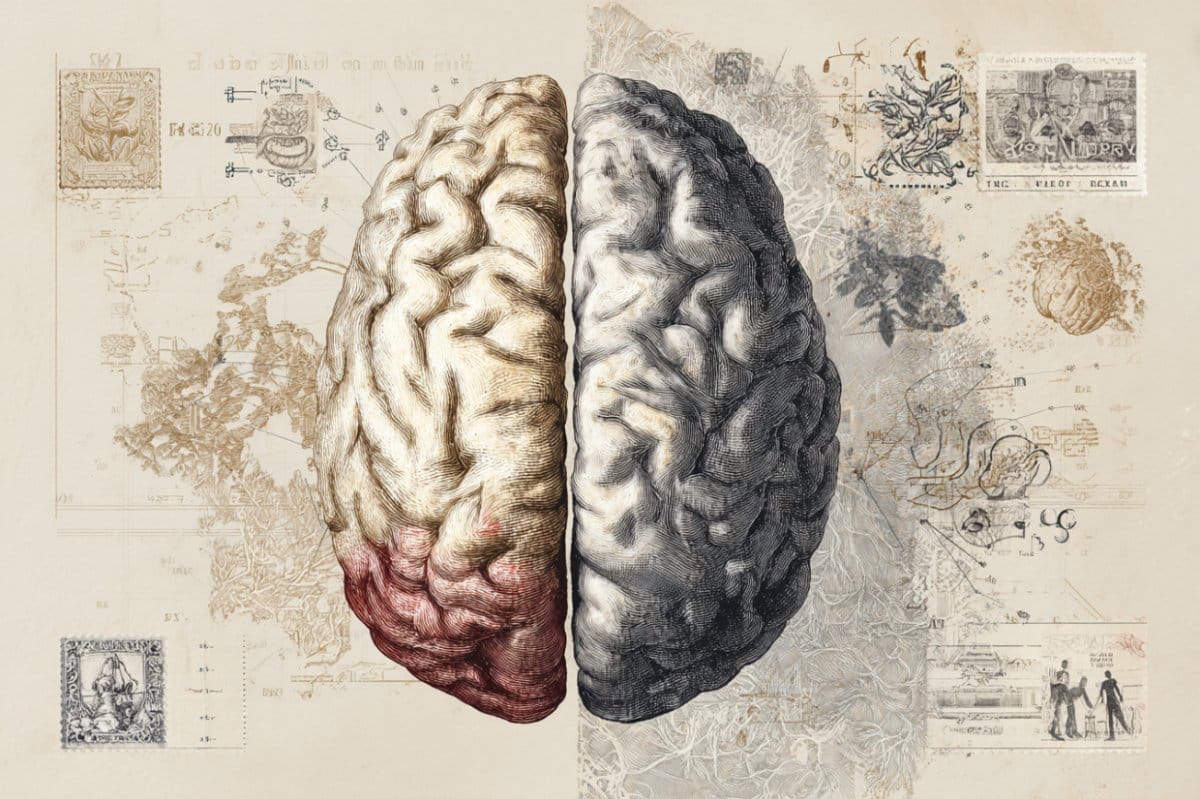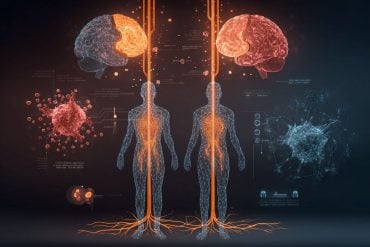Summary: Parkinson’s disease often starts on one side of the body, and new research shows this asymmetry influences how non-motor symptoms progress. Patients whose symptoms begin on the right side tend to experience greater cognitive decline and higher dementia risk.
Those with left-side onset are more prone to psychiatric symptoms, including depression, anxiety, and difficulty recognizing emotions. These findings underscore the importance of personalized care tailored to the individual’s unique disease profile.
Key Facts:
- Asymmetric Onset: Parkinson’s often begins on either the right or left side of the body.
- Distinct Risks: Right-side onset links to cognitive decline; left-side onset to psychiatric symptoms.
- Personalized Care: Incorporating asymmetry into diagnosis could guide more targeted therapies.
Source: University of Geneva
Parkinson’s disease often begins asymmetrically, affecting either the right or left side of the body first. Researchers from the University of Geneva (UNIGE) and the Geneva University Hospitals (HUG) have demonstrated that this initial side of onset influences the progression of non-motor symptoms.
Specifically, symptoms beginning on the right side are linked to a more pronounced cognitive decline, whereas those starting on the left side are associated with psychiatric disorders such as anxiety and depression.
Published in npj Parkinson’s Disease, these findings highlight the critical importance of personalized care tailored to the individual’s disease profile.

Parkinson’s disease affects approximately 10 million people worldwide. It typically begins asymmetrically, initially impacting only one side of the body. Although it first manifests through motor symptoms—such as tremors, slowed movement, or muscle rigidity—it also leads to cognitive impairments, anxiety, and depression, aspects of the disease whose progression remains poorly understood.
In recent work, a UNIGE and HUG team has shown for the first time that the side on which the first symptoms appear influences not only motor disorders but also the cognitive and emotional manifestations of the disease.
Thus, patients with motor symptoms on the right side (signs of dysfunction in the left hemisphere of the brain) show a more global cognitive decline and a higher risk of dementia, while individuals with symptoms on the left side (dysfunction in the right hemisphere) are more often confronted with psychiatric problems such as depression, anxiety and impaired recognition of emotions.
Towards personalised care
‘‘These results represent a crucial breakthrough in the study of the disease’s non-motor symptoms, which have long been underestimated by research,’’ explains Julie Péron, Associate Professor in the Laboratory of Clinical and Experimental Neuropsychology within the Faculty of Psychology and Educational Sciences and the Centre for Affective Sciences at UNIGE, as well as at the Neurology Service in the Department of Clinical Neurosciences at HUG, who led this work.
The study calls for the systematic integration of this symptomatic variable into the diagnostic process to ensure personalised care for each patient.
‘‘Taking this factor into account would allow for real anticipation and guide patients towards targeted therapies based on their specific Parkinsonian profile,’’ explains Philippe Voruz, postdoctoral researcher in the Laboratory of Clinical and Experimental Neuropsychology within the Faculty of Psychology and Educational Sciences at UNIGE, in the Neurosurgery Service at HUG, and in the Laboratory of Biological Geochemistry at EPFL, and first author of the study.
These findings are based on the analysis of 80 studies published over the past five decades. For the research team, the next step is to address several methodological questions, such as how to reliably measure the asymmetry of the disease based on observable symptoms, and to investigate whether similar patterns can be found in other disorders associated with Parkinson’s disease.
About this Parkinson’s disease research news
Author: Antoine Guenot
Source: University of Geneva
Contact: Antoine Guenot – University of Geneva
Image: The image is credited to Neuroscience News
Original Research: Open access.
“Impact of motor symptom asymmetry on non-motor outcomes in Parkinson’sdisease: a systematic review” by Julie Péron et al. npj Parkinson’s Disease
Abstract
Impact of motor symptom asymmetry on non-motor outcomes in Parkinson’sdisease: a systematic review
Parkinson’s disease (PD) presents with diverse symptoms, partly influenced by motor symptom asymmetry, which reflects hemispheric brain specialization.
This systematic review of 80 studies explored how lateralized motor symptoms affect non-motor outcomes in PD, including cognition, emotion, and psychiatric health.
Patients with right-sided motor symptoms (left-hemisphere pathology) show more global cognitive decline and higher dementia risk, while those with left-sided symptoms (right-hemisphere pathology) more often experience psychiatric issues like depression, anxiety, and impaired emotional recognition.
Visuospatial deficits were consistently linked to left-sided symptoms, aligning with right-hemisphere dysfunction.
Although findings vary across studies, this pattern suggests the relevance of brain lateralization in non-motor symptom assessment.
Motor asymmetry may also affect treatment responses, such as deep brain stimulation outcomes.
However, inconsistencies in study methods—definitions of asymmetry, motor subtypes, and comorbidities—limit meta-analytic conclusions.
Overall, incorporating motor symptom asymmetry into PD diagnosis and treatment could enhance personalized care, warranting more standardized future research.






